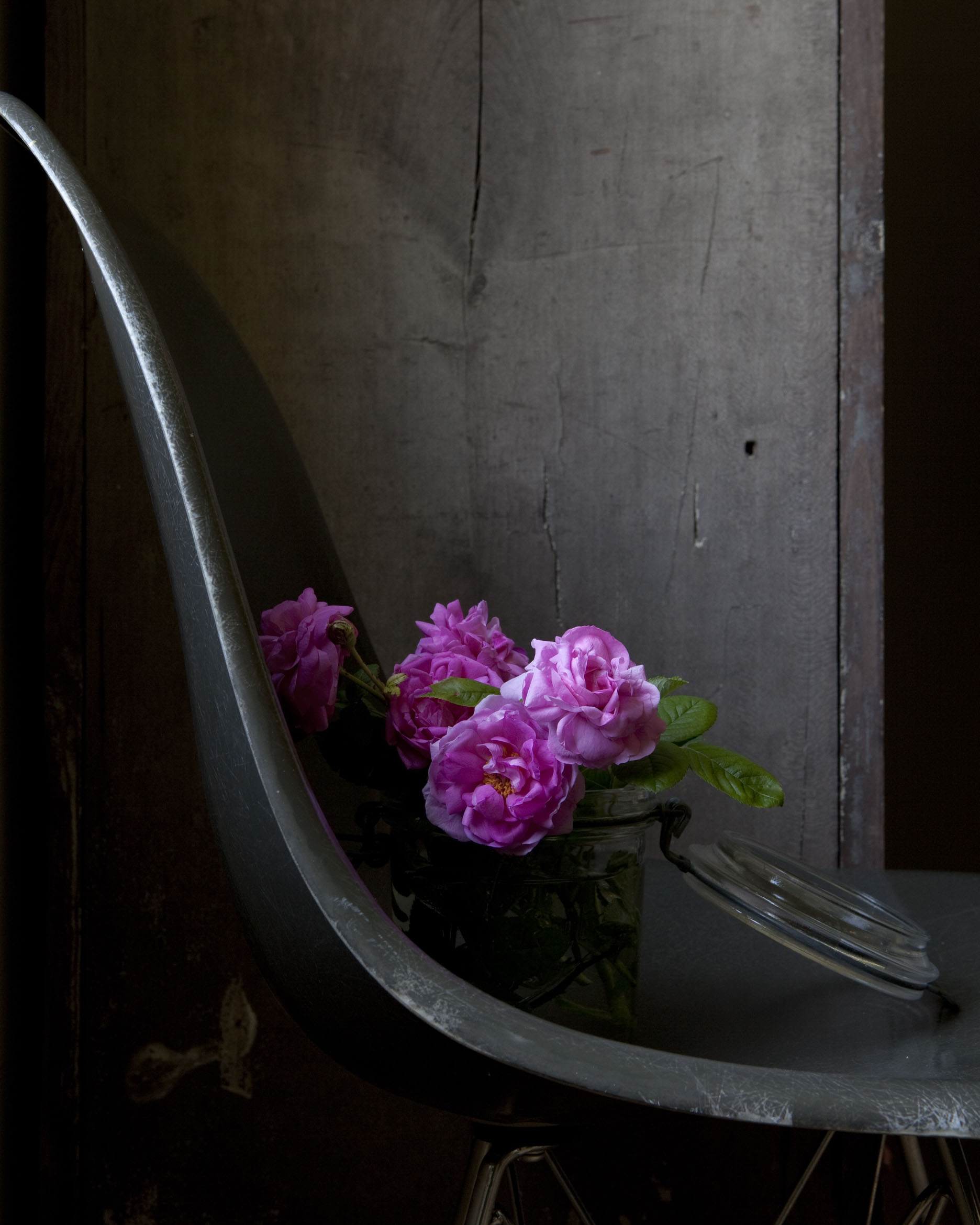pesto
 07.24
07.24 

Copyright © 2011 Andrea Gentl all rights reserved
mixed herbs and garlic scapes
It is a little new for me to think of making a pesto with anything but the HEAPS of basil available at high Summer. I guess that is because that is the type of pesto I grew up eating. Basil pesto had a real moment of chicness in the 80's when it suddenly appeared on menus everywhere, and in every hippie household with a mortar and pestle. Now, a new breed of pesto has emerged. It has been on my mind often this Spring and Summer since Easter, when I made a ramp pesto inspired by something I had had at Marlow and Son's. Pesto, like so many things is having it's moment... A reinvention of sorts, where anything green goes! It has popped up all over the place and with the most unusual ingredients. I recently had a nettle pesto on a sandwich at Saltie, in Williamsburg and a dandelion pesto with pasta at Roman's. Last Summer, while in Italy, I had a most delicious sage pesto served with a ragged and shaggy Maltagliati pasta.
Maltagliati pasta is a pasta made from scraps and cuttings of left over pasta dough after other pastas have been made. Add kale, garlic scapes, mixed herbs and arugula to that list and you have a whole new way to eat your greens. With a well stocked pantry and some herbs or greens you can make any sort of pesto you can possibly dream up.
I make pesto both with a mortar and pestle and with my immersion blender or food processor, depending on the ingredients. Basil for instance is easier to make with a mortar and pestle, while garlic scapes or kale really need to be chopped up in the food processor. Crushing the garlic with the salt first with a mortar and pestle releases the oils, dissolves the salt and gives the texture necessary for a good paste. Then the torn basil leaves can be added and pounded before adding the whole thing to a food processor, this combines a little of the old and new world techniques. But do whatever works for you, there is really no right or wrong way.
Pesto, originally came from Liguria, a small region in the northwest of Italy.The mineral-rich seaside soil of Genoa and the Cinque Terra, combined with temperate climate of Liguria make a perfect environment for growing basil. It is not uncommon to see heaps of basil growing in pots on every stoop and every home and balcony in Liguria. The Ligurians created the classic Pesto alla Genovese using a combination of basil, garlic, pine nuts, olive oil and parmigiano.
In Italian the verb pestare means to pound, or to crush, this is where pesto originally gets it's name.
BASIC BASIL PESTO/ FOOD PROCESSOR WAY
pine nuts
basil leaves
garlic
juice of half a lemon or a lime
olive oil
parmigiano
sea salt
fresh ground black pepper
In a cast iron skillet add 2tblsp. of olive oil. Heat and add 1/3 cup of pine nuts, brown until golden.
remove and set aside.
When the pine nuts are cool, add them to your food processor along with 20 or so fresh basil leaves and 1 large clove of garlic add 4-5 tablespoons of olive oil and a pinch of sea salt and freshly ground pepper. Blend until smooth.
Add 1/2 to 3/4 cup of parmigiano and a couple more tablespoons of olive oil and the lemon or lime.
Blend until creamy.
Add more salt and pepper to taste.
MINT AND LEMON BALM PESTO
We always have an abundance of mint and lemonbalm throughout the Summer and into the Fall. We started making an herbed pasta a few years ago and it has now eveolved into a mint pesto. You may find you want to use a smaller garllic clove with this recipie or less of it so it does not overpower the mint. The mint is lovely with sharp contrast of the Pecorino Romano. This pesto has no nuts.
one bunch mint
one bunch lemon balm ( optional, you can make just using the mint)
juice of 1/2 lemon or lime
1 small garlic clove
olive oil
pecorino romano
sea salt
fresh ground black pepper
Add the torn mint and along with a small clove of garlic and 4-5 tablespoons of olive oil to the food processor.
Blendend until smooth.
Add the juice of 1/2 lemon or lime depending on your preference.
Add 2 more tablespoons of olive oil, sea salt and freshly ground black pepper and 1/2 cup of pecorino romano.
Blend again until smooth.
Set aside 1/2 cup of HOT pasta water before draining the pasta. Quickly mix in with the pesto and add the finished pesto to the pasta
SAGE PESTO FROM A TINY RESTURANT IN CATIGNANO, ON THE OUTSKIRTS OF SIENA ITALY
One bunch of sage
One fistfull of parsley
Juice of one lemon or lime
Small handfull of raw almonds About 10
one large clove of garlic
Salt
Pepper
Olive oil
pecorino romano (optional)
the key is the pasta water... save at least a 1/2 cup to mix in the pesto.
I made this one in the food processor because the leaves and the almonds were a little tough to pound and crush by hand.
Add the torn sage leaves, parsley and garlic to the food processor along with 4-5 tablespoons of olive oil and blend until smooth.
Add the juice of 1/2 lemon, 2 more tablespoons of olive oil, salt and freshly ground black pepper and 1/2 cup of pecorino romano.
Blend again until smooth.
Set aside 1/2 cup of HOT pasta water before draining the pasta. Quickly mix in with the pesto and add the finished pesto to the pasta
OTHER PESTO IDEAS
follow the same simple recipie above substituting the basil for any of the following. You can either use nuts or omit, anything goes.
Nettle pesto
Dandelion green pesto
Mixed herb pesto ( mint, lemon balm, thyme parsley)
Parsley pesto
Ramp pesto
Arugula pesto
Kale pesto
ingredients to have on hand
arugula
sage
ramp (EARLY SPRING)
garlic scapes
mixed herbs/ lemon balm, thyme, mint, parsley, sage, chives,
nettle
walnuts
almonds
olive oil
a nice grassy olive oil
parmigiano
pecorino romano
pine nuts
garlic
dried chile
parsley
lemons
kale
dandelion greens
 andrea gentl | Comments Off |
andrea gentl | Comments Off | 




















